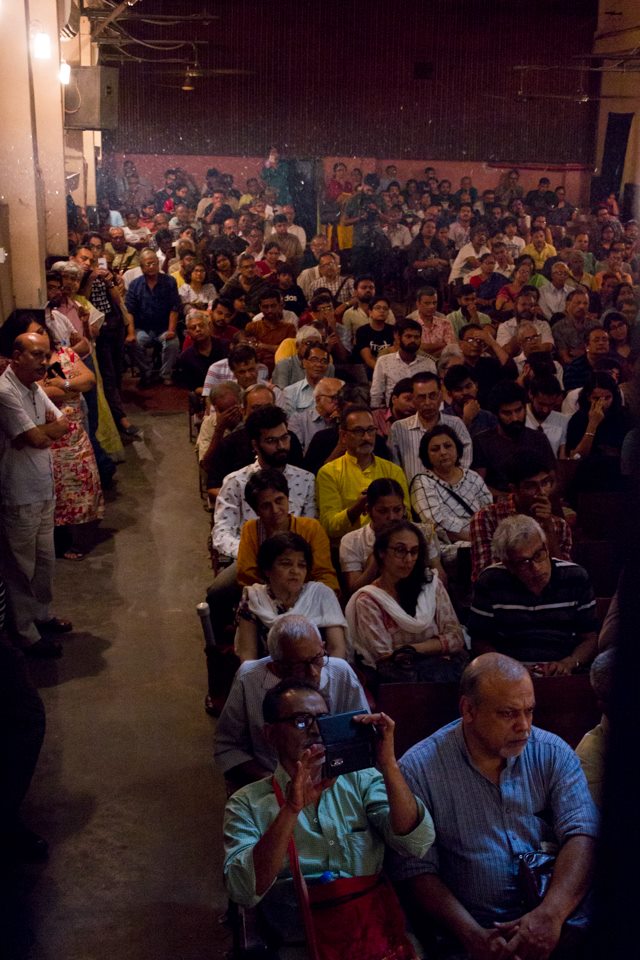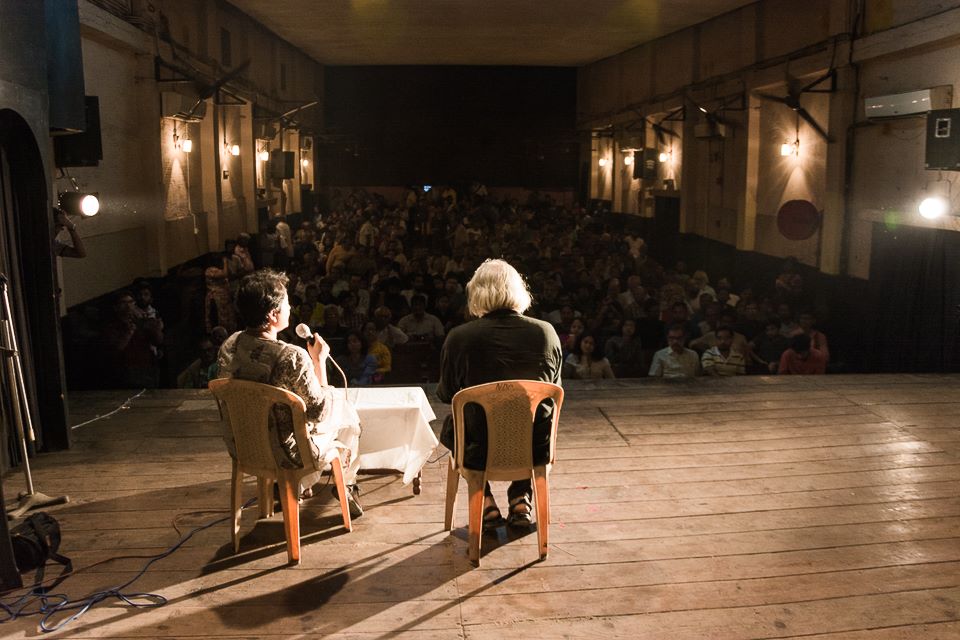“Why did the police not break Anand Patwardhan’s bones?”
A Search for Reason, with Anand Patwardhan
- Akash Bhattacharya
On 24 March, the people of Kolkata were treated to Reason – the latest hard-hitting film of the reputed documentary film-maker Anand Patwardhan. Anand’s reputation as a stridently political film-maker with a deep passion for anti-caste and anti-communal politics meant that Jogesh Mime Academy did not have a single empty seat by the time the film started. A few people were fortunate enough to find a corner to sit by the wings even if not a full seat!
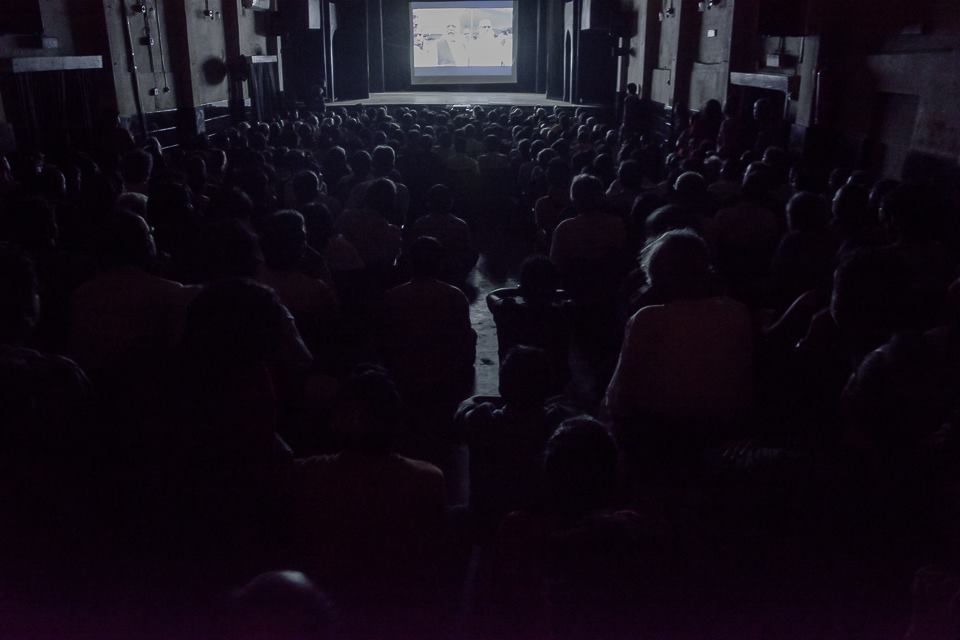

Before the film started came an alert from the director: pay attention to every moment of the film if you want to grasp the full story. It took a while for us to understand the reason behind the alerting. On the surface the film seemed like a collage of events that have marked the rise of the Rashtriya Swayamsevak Sangh (RSS) as a dominant force in society. Once we delved deeper into the film, we realised how carefully each event has been probed to tease out the links that bind them. Divided into eight chapters and running into four hours, the film presents an outstanding anatomy of our times.
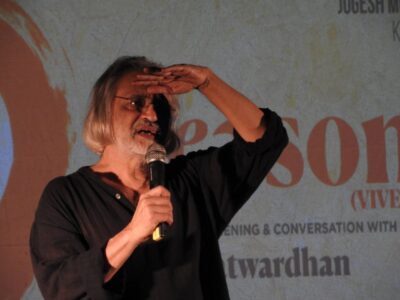
If you pay attention to the grainy details Anand presents, you will know that the murders of rationalists and attacks on activists critical of the government, the attacks on Muslims and Dalits in the name of cow protection, attempts at distorting history, the targeting of university students under the guise of sedition, are not disparate events. The connections are deep, intricate and frightening. Behind all these lies a well-organised and concerted effort to entrench a narrowly defined Hinduism or Hindutva as the dominant ideological force in our society. The BJP government and the Narendra Modi phenomenon is a product of these processes and is in turn helping to expedite them.
At the head of this effort is an organisation called the Rashtriya Swayamsevak Sangh, a self-proclaimed cultural organisation working towards organising Hindus. Organise Hindus? Very well. Against whom though? Attempting to answer this question, Anand takes us back into India’s colonial past. The encounter between the East and the West had set off a train of ideas and practices that promised to free women and subordinate castes from the throngs of Brahminical oppression. The resultant insecurities among upper caste Hindus, combined with increasing self-organisation of Muslims, produced such anxieties among the former that led them to redefine Hinduism as Hindutva.
According to Anand, the redefinition and subsequent efforts to organise Hindus along such lines marked an attempt to cage a fluid, multi-dimensional culture into a narrowly defined “divine” agenda pitched in opposition to “reason”. Over the decades since independence, as that agenda has found takers in the nooks and crannies of our society, the RSS has managed to infiltrate institutions such as the police force, and are working hard to establish themselves in educational institutions in the guise of curbing the “anti-national” tendencies of students of Jawaharlal Nehru University, Hyderabad Central University and the Film and Television Institute of India. Importantly, it is no longer the RSS alone that works towards such ends. Organisations such as Abhinav Bharat and Sanatan Sanstha, the film tells us, may be smaller in scale but have struck deep roots at local levels.
Do not underestimate the power and reach of militant Hindutva, Anand seems to tell us again and again. The murders of Narendra Dabholkar, Govind Pansare, Gauri Lankesh and M.M. Kalburgi, the appropriation of Shivaji by Hindutva, the attacks on Dalits in Una, the lynching of Akhlaq, the botched investigation of the Malegaon blasts and the suspicious death of police officers such as Hemant Karkare (who was on the verge of nailing down Abhibav Bharat for those blasts), all point to the fact that the tentacles of Hindutva have spread far and wide. These are all singular episodes in the battle between “divinity” and “reason”; one that seems to be perpetually unfolding in and around us and one that is yet to reach a definite result. We are already part of the battle and it is up to us to fight it well, the film suggests.
Through a masterful juxtaposition of the multiple sites where the battle has been taking place, Anand produces a sense of urgency that is bound to leave its mark on the viewer. We find his camera in streets, in meetings and public gatherings of the Hindutva organisations, in press conferences, in police stations, in private homes of activists under attack and in the memorial meetings of Kalburgi and Pansare. Soon after we hear Narendra Dabholkar’s wife commenting on her late partner’s life-long commitment to the common people, we are taken to a public meeting where Hindutva hardliners proclaim that people like Dabholkar were enemies of Hinduism because they campaigned against blind faith and superstition and therefore deserved to be killed. We even find ourselves at a press conference in Mumbai where the Sanatan Sanstha, eager to deny any involvement in the attacks on activists, threatened to physically assault Anand and “break his bones” unless the police did so!
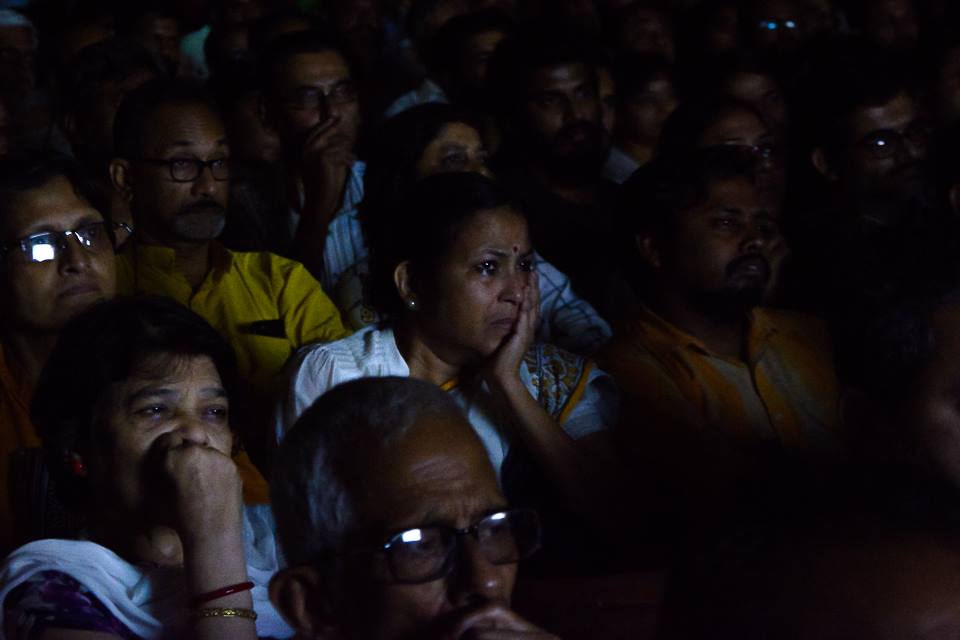

Despite the density of the facts, the film had an electric effect on the audience. The events having unfolded states far away from Bengal, and big sections of the mainstream media having worked hard to distort the facts, we lapped up the thorough exposition of things that we ought to know. Many people said at the end that the film needs to be watched time and again to gain enough mastery over the facts to be able to convince friends and family members in the offices, homes and neighbourhoods. One of our friends correctly pointed out at the end, “This is not a film that calls for appreciation. It calls for action, especially on the eve of the Lok Sabha elections.” Reason is indeed a documentary that inspires us to look into the future even as we study the past.
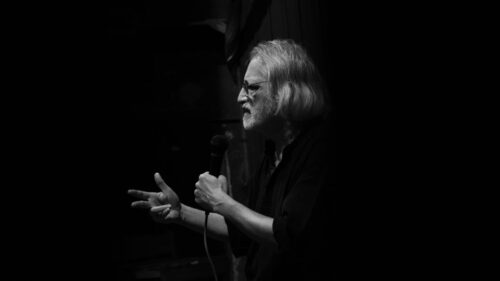
Anand left us with a few questions to think through. What explains the mass purchase that such oppressive, obscurantist ideologies seem to have? And where shall salvation arrive from? How can we team up with peasants’ and workers’ movements that have sprung up against government policies that have been hidden from public view by a Hindutva-powered hyper-nationalism? Perhaps the biggest question that the film raises is a simple one: why now? Is there something in the social fabric of globalised, neo-liberal India that makes it amenable to such ideological manoeuvrings? The search for reason is thus a continuing one as is the fight to defend it.
